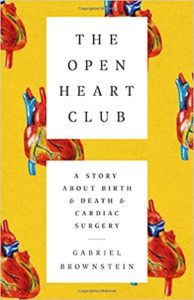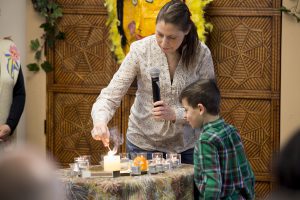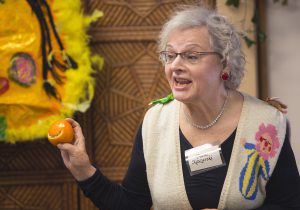By Doris Friedensohn

Riveting isn’t a word I use very often—especially about matters touching on science. But it captures my response to Gabriel Brownstein’s beautiful, multi-dimensional memoir, “The Open Heart Club.” Had he begun life 10 years earlier, Brownstein tells us, and far from a medical mecca (he was born in 1966 in New York), he would have been dead long ago. He was lucky with his heart defect, known as the tetralogy of Fallot. The talented New York and Boston doctors who treated him and the state-of-the-art heart surgery they practiced have enabled him to live normally, productively and, in his wry phrase, happily ever after.
Brownstein, who teaches writing at St. John’s University in Queens, is a companionable narrator of his own story and those of others, mostly of his generation. We accompany him to doctors’ offices and emergency rooms and to interviews with several plucky survivors. We follow his explanations of earlier practices in treating congenital heart defects. The medical histories, in Brownstein’s telling, seem no more mysterious than his account of baseball’s Willie Mays and Tom Seaver speaking to youngsters who’d had open-heart surgery at New York’s Presbyterian Hospital. “You’re the real heroes, The Open Heart Club,” the baseball players tell the kids.
In a similar vein, the author moves smoothly between the ordinary and extraordinary events that constitute a single life. We learn about his passion for biking and hiking, his close, happy marriage, two daughters, and supportive parents; also, his tenured teaching position and a growing stack of published fiction. And then there are the surgeries, the catheters, the scars on his chest, and those unpredictable eruptions of the heart: the speed-ups and heavy thumping, often through the night. On the subway after work, he worries about making it home once the BOOM BOOM begins, and whether his chest will have to be cut yet another time to regulate the flow of blood.
As we learn from easy-to-read footnotes, the author interviewed his doctors at length. He took elaborate notes and checked back with them on details of his treatment, including several surgeries, and his prognosis. Their willingness to explain approaches to congenital heart defects first in children and later in the treatment of adults makes for illuminating reading. Also fascinating are the author’s “thumbnail” histories of studies of the heart going back to classical times and his comments about the key role of women cardiologists and researchers in the treatment of heart disease among children.
Brownstein quotes Susan Sontag: “Everyone who is born holds dual citizenship, in the kingdom of the well and the kingdom of the sick. Although we all prefer to use only the good passport, sooner or later, each of us is obliged, at least for a spell, to identify ourselves as citizens of that other place.” But are those places so separate? Medicine, this memoir argues, “penetrates our lives so deeply that it’s invisible. We forget that we have been rescued.”
Consider this sobering statistic. By 2023, “164 million people in the U.S. will be living with chronic illness.” If “we’re all in the Open Heart Club now,” as Gabriel Brownstein contends, we’ll need to circulate this wise book among friends and family and we’ll want to relish its lessons.
Doris Friedensohn, professor emerita of Women’s Studies at New Jersey City University, is the author of the food memoir “Eating As I Go: Scenes from America and Abroad,” “Cooking for Change: Tales from a Food Service Training Academy” and “Airports are for Waiting and Other Traveler’s Tales.”


